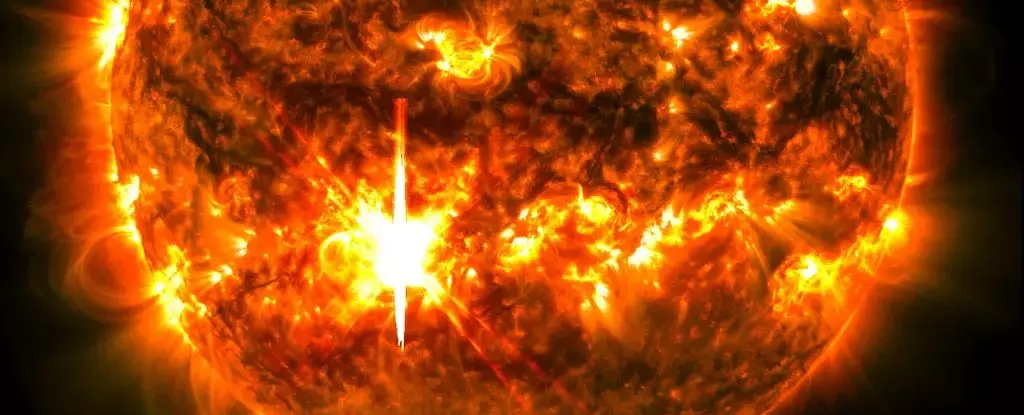As October rolls in, the Sun has catapulted us into the spooky season not just with Halloween decorations but also with a significant solar event. On October 1, a potent solar flare registered at X7.1, marking it as the second most powerful flare of the current solar cycle and placing it among the top 30 most intense solar flares recorded in the last three decades. While the term ‘flare’ conjures images of imminent danger, experts assure us that there is no threat to life on Earth. Instead, we can expect minor to strong geomagnetic storms—a phenomenon that will unfold from October 3 to 5—following the ejection of solar particles from this colossal activity.
Solar phenomena, including flares and coronal mass ejections (CMEs), are a common aspect of the Sun’s lifecycle, especially during periods of heightened activity. This current phase, scientists believe, represents a peak in the solar cycle, characterized by more frequent and intense sunspot activity. Essentially, sunspots are areas where the Sun’s magnetic fields are especially strong. When opposing magnetic fields within these sunspots become entangled, powerful energy is released, resulting in explosive events: solar flares illuminate the space with light that travels to Earth at the speed of light, while CMEs release vast quantities of solar particles into space.
The interaction of these energetic particles with Earth’s magnetic field can disturb our planet’s magnetosphere, leading to what we term geomagnetic storms. This dramatic disruption primarily affects the upper atmosphere—the stratosphere—rather than the ground level where humans live. Furthermore, solar particles can be channeled toward the poles, where they collide with atmospheric particles, creating breathtaking natural displays known as auroras borealis and auroras australis.
The recent solar flare and CME originated from an intricate sunspot cluster labeled AR 3842. This region is classified as a Beta-Gamma-Delta sunspot group, recognized for its complex magnetic interplay. Such a configuration is particularly conducive to flare activity. As this sunspot group traverses the solar disk, it remains in an optimal position for producing Earth-directed eruptions. Following the initial burst of energy from the X7.1 flare, researchers observed another significant eruption, classified as an M3.3 flare, just hours later. These M-class flares, while not as potent as X-class ones, still hold the potential to disrupt radio communication on Earth’s sunlit side.
While the immediate effects of solar flares manifest primarily as radio blackouts, CMEs have the potential for broader influence. The intensity of a CME’s impact depends on several factors, including its density and magnetic orientation. Thankfully, current assessments suggest that the latest CME from AR 3842 will not be severe. The most significant solar event thus far in this cycle was an X8.7 flare that occurred in May, which led to exceptionally vibrant auroras worldwide. It’s difficult to predict if a similar spectacle will arise from the recent activity; however, forecasts indicate that skywatchers may still be in for a treat.
According to predictions from esteemed organizations like the NOAA Space Weather Prediction Center and their international counterparts, geomagnetic storms classified at G3 levels or strong are likely. Such storms, which can cause enhanced auroras, signify a peak in geomagnetic activity rated on the 10-point Kp Index scale—a tool commonly used for predicting auroras. Recent forecasts predict values of over 6 and 7 for the nights of October 4 and 5, respectively, hinting at a thrilling celestial lightshow.
In 2023, auroras have dazzled observers, and this recent burst of solar activity may herald more remarkable displays. Enthusiasts and casual observers alike are hopeful for further opportunities to witness these natural wonders in the sky. As we navigate through a period of heightened solar activity, we are reminded of the dynamic processes that govern our closest star’s behavior, and how these events ripple through our planet, illuminating our skies while facilitating ongoing research into the Earth’s atmosphere and magnetic field.
The interplay between solar activity and Earth’s response offers a fascinating and continuously evolving storyline, provoking both scientific curiosity and public interest. As we enjoy the spooky creations of human imagination this Halloween, let us also marvel at the unfathomable forces of nature and the positions we hold within the cosmic web.


Leave a Reply